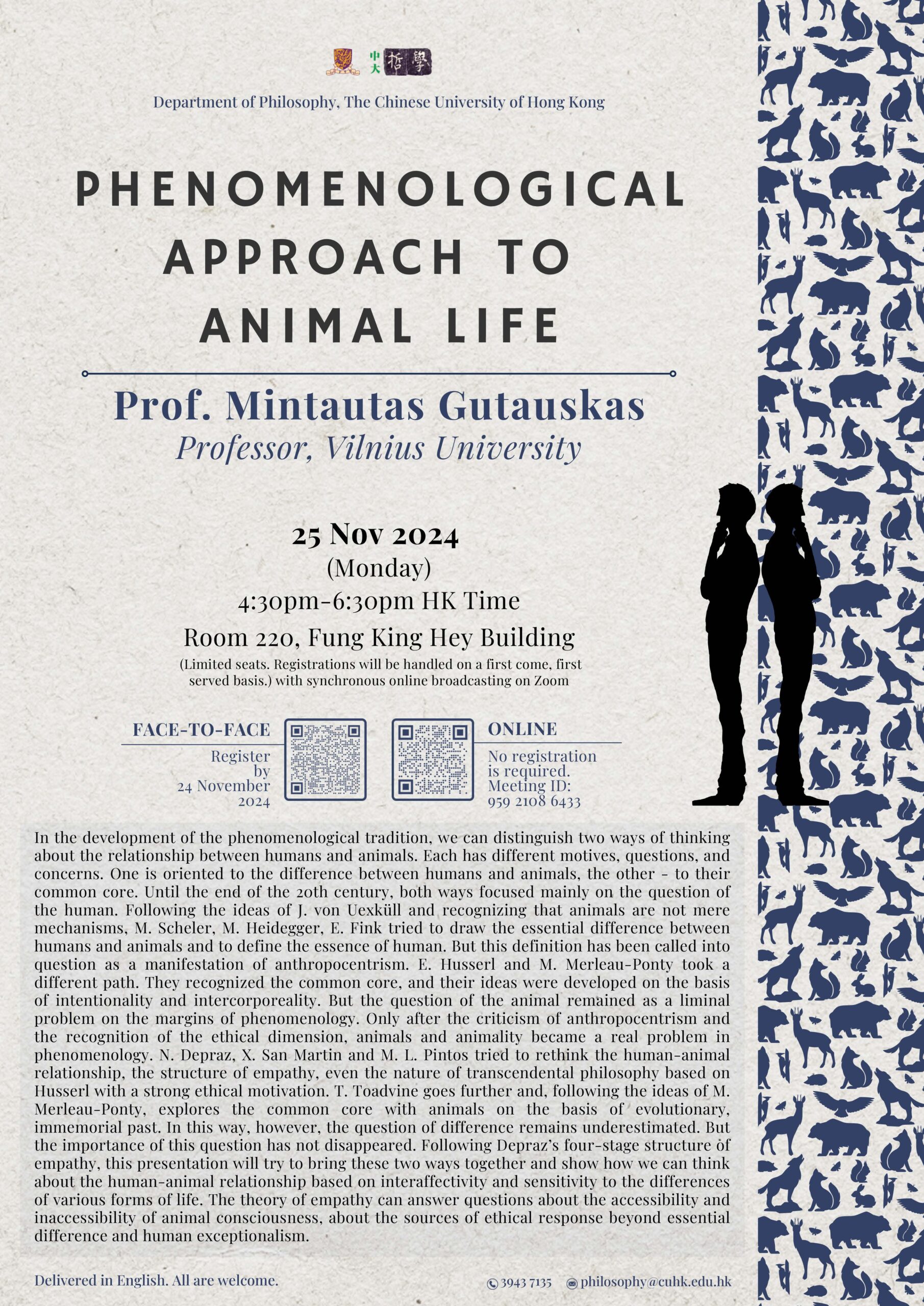Phenomenological Approach to Animal Life (Departmental Seminar)

Prof. Mintautas Gutauskas |
|
4:30pm-6:30pm HK Time |
|
Room 220, Fung King Hey Building with synchronous online broadcasting on Zoom |
Joining the Seminar face-to-face:
Limited seats for face-to-face seminar. Registrations will be handled on a first come, first served basis.
Register by 24 November 2024: https://cloud.itsc.cuhk.edu.hk/webform/view.php?id=13699520
Joining the Seminar online:
No registration is required.
Link: https://cuhk.zoom.us/j/95921086433
Meeting ID: 959 2108 6433
Enquiries:
Tel: 3943 7135
Email: philosophy@cuhk.edu.hk
Abstract:
In the development of the phenomenological tradition, we can distinguish two ways of thinking about the relationship between humans and animals. Each has different motives, questions, and concerns. One is oriented to the difference between humans and animals, the other – to their common core. Until the end of the 20th century, both ways focused mainly on the question of the human. Following the ideas of J. von Uexküll and recognizing that animals are not mere mechanisms, M. Scheler, M. Heidegger, E. Fink tried to draw the essential difference between humans and animals and to define the essence of human. But this definition has been called into question as a manifestation of anthropocentrism. E. Husserl and M. Merleau-Ponty took a different path. They recognized the common core, and their ideas were developed on the basis of intentionality and intercorporeality. But the question of the animal remained as a liminal problem on the margins of phenomenology. Only after the criticism of anthropocentrism and the recognition of the ethical dimension, animals and animality became a real problem in phenomenology. N. Depraz, X. San Martin and M. L. Pintos tried to rethink the human-animal relationship, the structure of empathy, even the nature of transcendental philosophy based on Husserl with a strong ethical motivation. T. Toadvine goes further and, following the ideas of M. Merleau-Ponty, explores the common core with animals on the basis of evolutionary, immemorial past. In this way, however, the question of difference remains underestimated. But the importance of this question has not disappeared. Following Depraz’s four-stage structure of empathy, this presentation will try to bring these two ways together and show how we can think about the human-animal relationship based on interaffectivity and sensitivity to the differences of various forms of life. The theory of empathy can answer questions about the accessibility and inaccessibility of animal consciousness, about the sources of ethical response beyond essential difference and human exceptionalism.
Delivered in English.
All are welcome.




